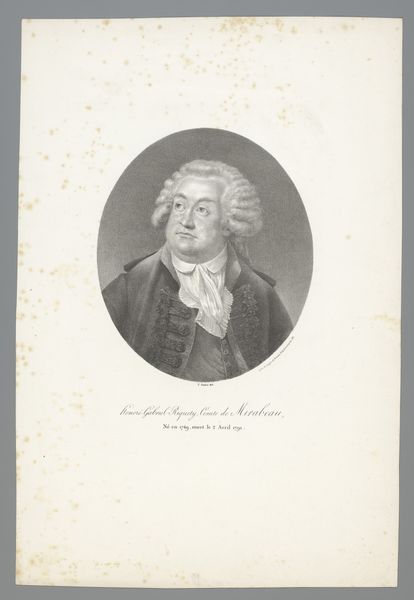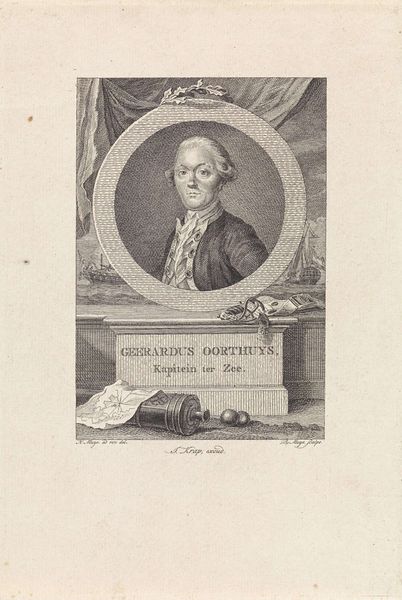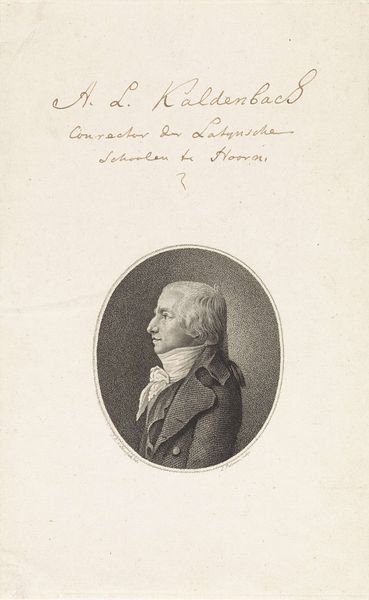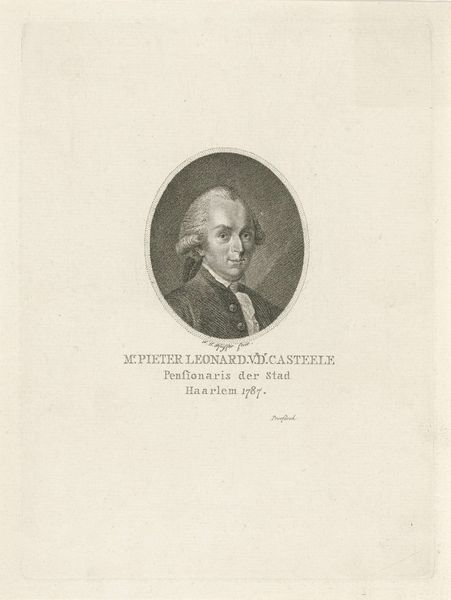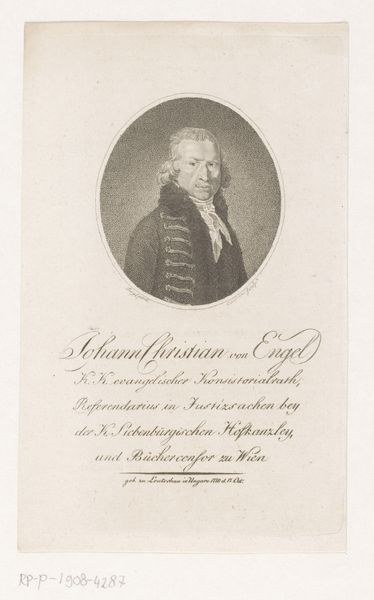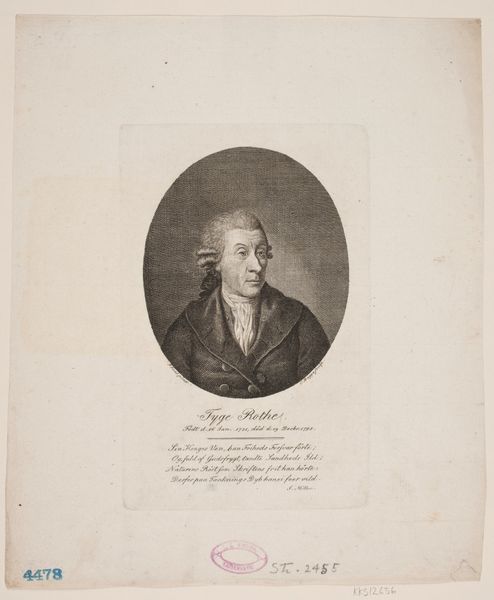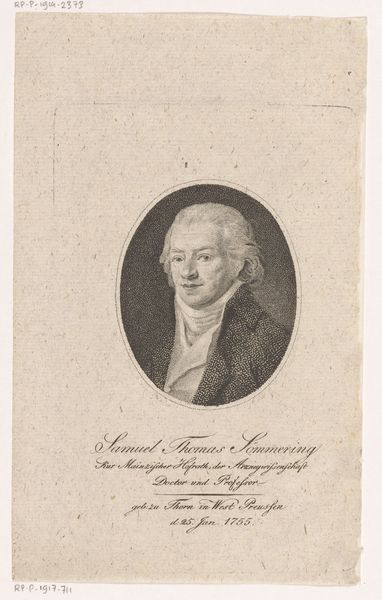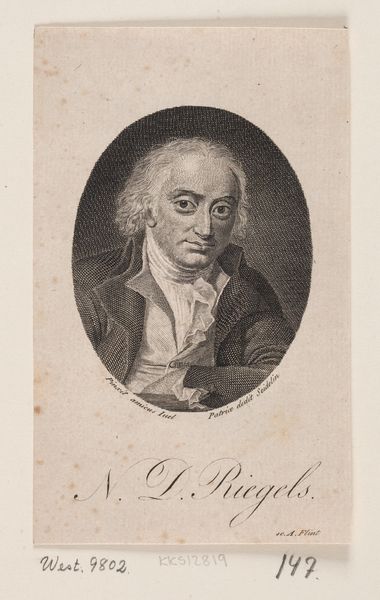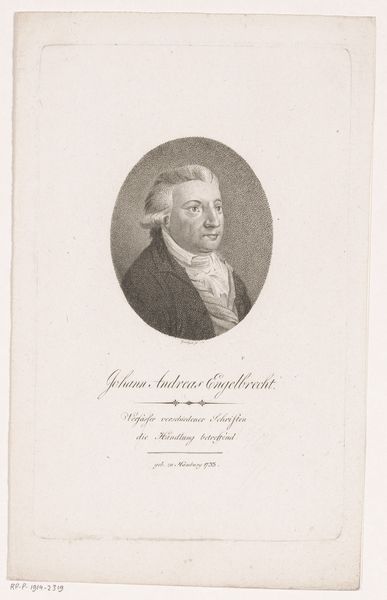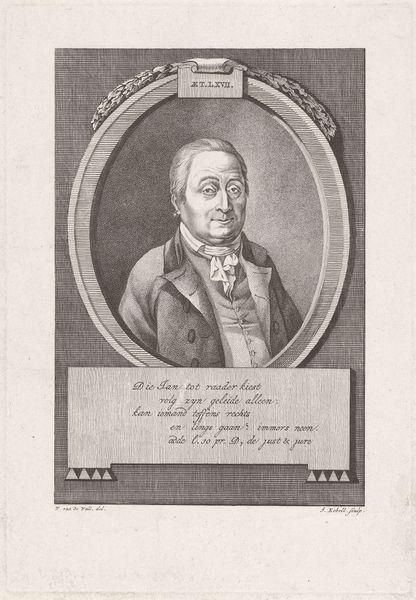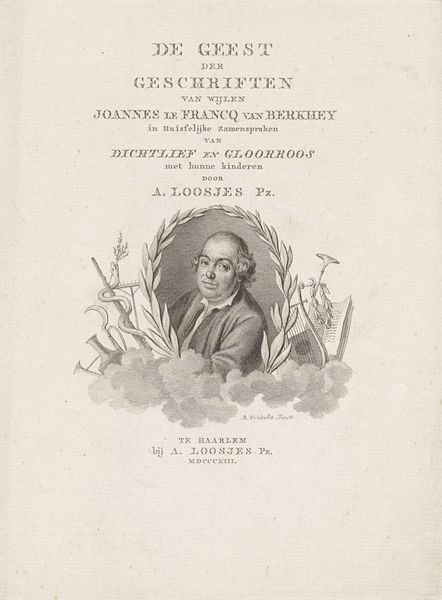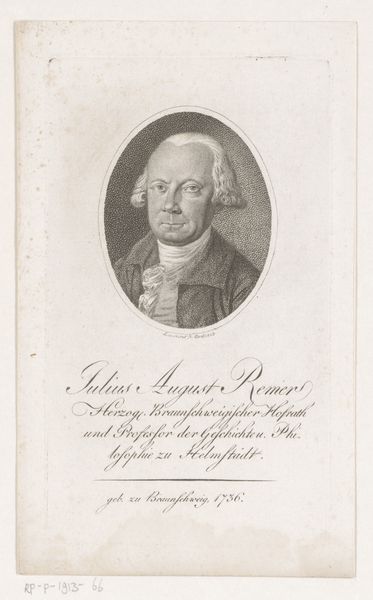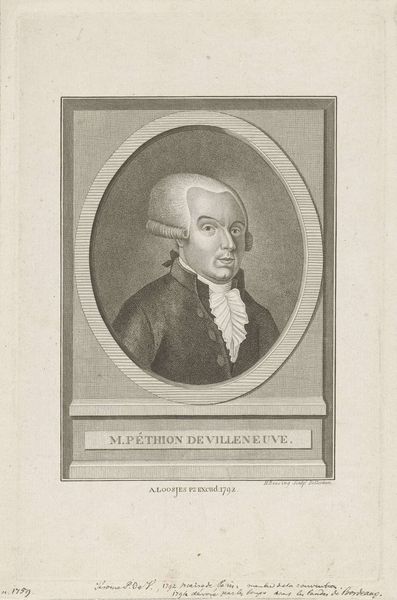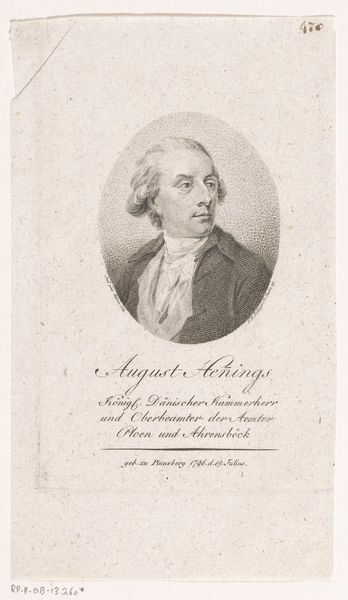
print, engraving
portrait
neoclacissism
history-painting
engraving
realism
Dimensions: height 170 mm, width 119 mm
Copyright: Rijks Museum: Open Domain
Curator: Oh, hello there! Have you had a chance to взглянуть—to cast an eye—on this engraving, "Portret van Johan Meerman," crafted back in 1817 by Willem van Senus? It's currently residing in the Rijksmuseum, steeped in Dutch history. Editor: You know, before I knew anything about it, that stern face within the oval made me think of, oh, some old headmaster deciding if I'd get detention. A bit severe, isn't he? Though I must say, there's an impressive, meticulous quality in the way it's rendered. Curator: It’s an intriguing image, certainly, and that initial impression isn’t entirely unfounded. The portrait belongs to the Neoclassical movement, which deliberately invoked a return to the artistic principles of classical antiquity, particularly that air of Roman gravitas. And portraiture in that style had to project authority and the importance of the subject. It had social functions and purposes. Editor: So, you’re saying it’s a calculated severity, rather than genuine grumpy-pants? Though, tell me, does it truly connect emotionally? For me, it feels rather... distant, removed. All I see is an idealised important dude frozen in print. Curator: Ah, there's the rub, isn't it? Neoclassicism, despite its technical brilliance, can sometimes struggle with raw emotion. Here, the artist privileges reasoned form and stoicism, traits highly prized in intellectual circles during that era. Johan Meerman was, after all, a prominent figure; so the visual message becomes key. This wasn't simply a likeness, it was a declaration of position, of worth. The inscription above indicates a kind of eulogy, which, naturally, will amplify a certain sense of idealisation. Editor: Okay, knowing that context definitely softens my initial skepticism. Seeing it as a commemorative piece, rather than just some frosty dude, helps me engage. It shifts from just *looking* important to *feeling* respectfully commemorated. Still, I can't help wondering if Meerman ever cracked a smile. Curator: Perhaps he did, in the company of close friends and family, where the pressures of civic image could be set aside. And though an image from almost two centuries ago, it still has the ability to generate reflection. It highlights how portraiture isn't always about pure likeness, but about constructing a narrative.
Comments
No comments
Be the first to comment and join the conversation on the ultimate creative platform.
